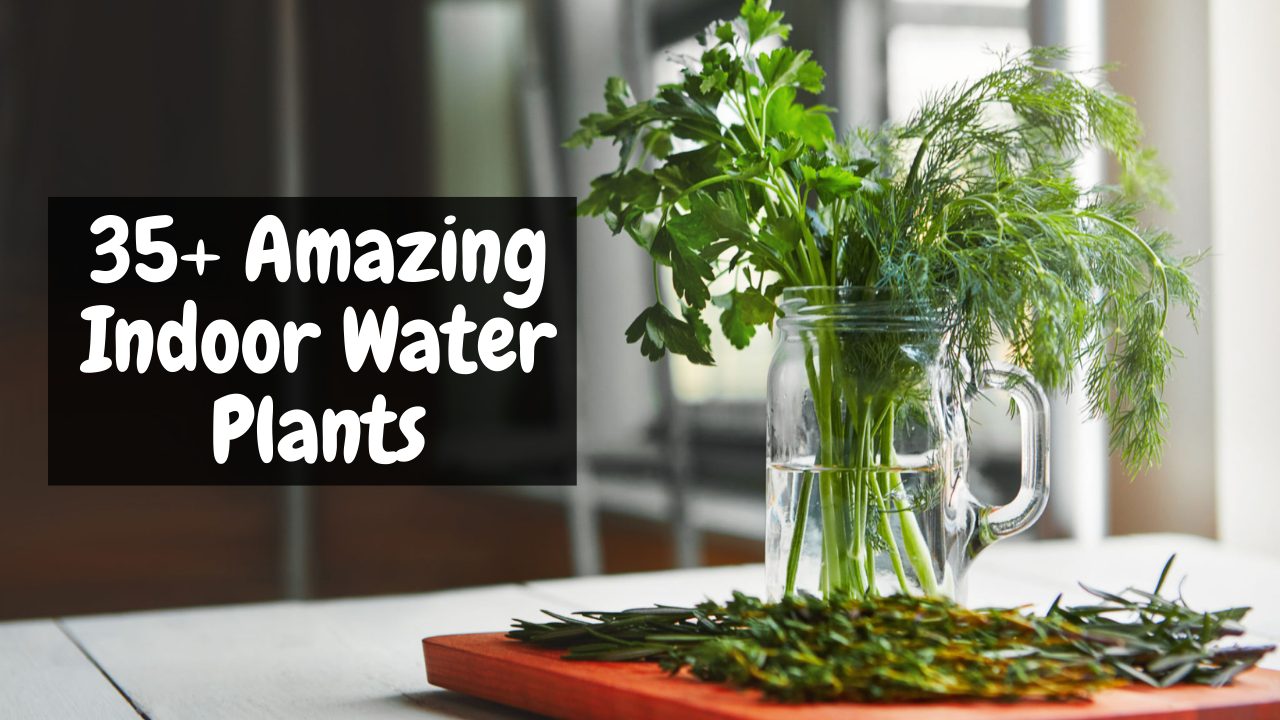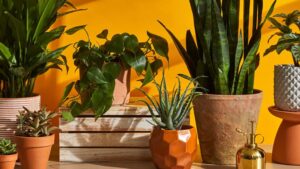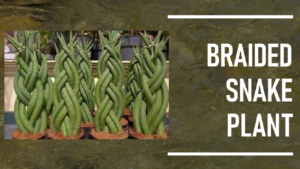Do you want indoor plants that have the following benefits?
- Less care
- Fewer pests
- Less mess
- More plants
- Elegant display
If you answer the above question YES!, then these amazing indoor water plants are perfect for you. With indoor water plants, you can easily nurture greenery at your home without devoting much time.
With that said, let’s quickly check out more than 35 indoor water plants that perfectly fit your home.
Amazing Indoor Water Plants
1. Philodendron

This is one of the most popular plants as you can grow them in the soil as well as in water. All you need is a cutting from a healthy Philodendron plant and a vase/jar full of non-chlorinated water.
The heart-leaf philodendron is pretty much adaptable in growing water. Just put a 6 inches long cutting in a clean and clear jar or bowl. Then place that jar in bright light. However, do not forget to change the water once in 3-4 days. Once the plant has settled you can change the water monthly.
2. Lucky bamboo

This is the best water indoor plant, famous for its forgiving nature. You can grow lucky bamboo in water with little care. You can place this incredible beauty on the coffee table. In the narrow vase, they look incredible.
While growing Lucky bamboo ensure their roots are submerged in water. Also, add some gravel around the plant. This will make their placement firm. Moreover, every 4-5 days you need to change their water.
3. Wandering Jew
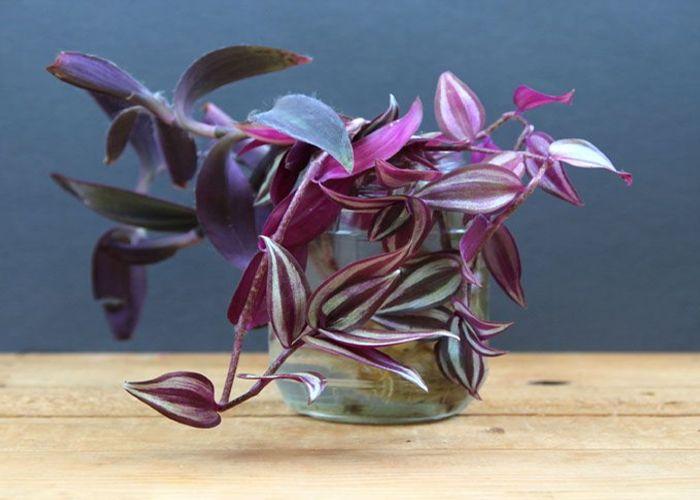
Wandering jew is a tough plant that enjoys warm environments. This colorful plant does exceptionally well in water.
An evergreen perennial, Wandering Jew or Tradescantia zebrina, with its lush green leaves and purple margins, adds a touch of ornament to any room. The roots can be stunted if exposed to too much direct sunlight. So, place them where they can get plenty of bright, indirect light.
Water plants like Wandering Jew plants for home are extremely resilient and durable houseplants. Just remember to keep changing their water every 3-5 days.
4. English ivy
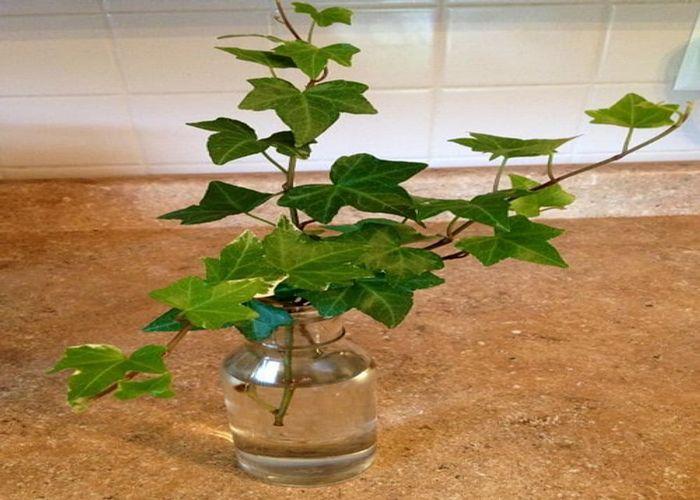
In glass jars, English ivy can be grown to hang gracefully from any high place, and it is one of the most air-purifying plants!
5. Pothos
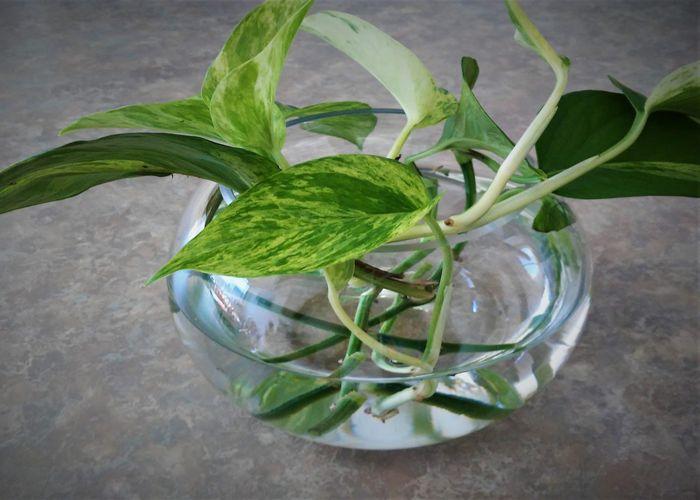
With their glossy heart-shaped foliage, pothos is another great option to go for. Grow them in water, in a clear bowl or vase, and place them on a shelf. The cascading leaves of pothos really look wonderful.
As they do best in dappled sunlight, place them near the east-facing window.
Moreover, they are air purifying plants that can aesthetically enhance your desk, table wall, or even bathroom. You can easily arrange them in different ways.
You can simply grow more pothos plants from its cuttings. All you have to do is place the cuttings in a jar filled with tap water. To keep any algae away from pothos, keep cleaning the jar. In addition, keep changing the water every 20 days to maintain the right oxygen level.
6. Spider plant

With their narrow arching foliage and baby spiderettes, spider plants look quite interesting. You can grow this plant permanently in a glass jar or change the cuttings into a new pot once they develop roots.
Even for beginners, this plant is one of the easiest houseplants to grow. Its lengthy, slender leaves sprout in rosettes that droop over through the pot’s rim.
While growing spider plants in water, Keep changing the water regularly every 2-3 days and never expose it to harsh sunlight. Take care of these two points and your spider plant will thrive for years!
7. Chinese evergreen

Chinese evergreen has dark green, waxy, and lance-shaped foliage with wavy borders. This plant is more than happy to thrive in a small transparent vase filled with aquarium rocks and water.
The plant has variegated or leathery leaves covered with a silvery pattern is eye-catching. The cuttings can be propagated in a transparent vase filled with aquarium rocks.
Chinese evergreens are excellent low-light interior plants. In addition, to their stunning leaves, the plant blooms resemble miniature lily flowers. Although flowers are not striking, they pop out now and then.
As the plant thrives to become 3 feet in height and develops slowly, you can use them as countertop plants at first and later as carpet plants subsequently.
8. Arrowhead plant
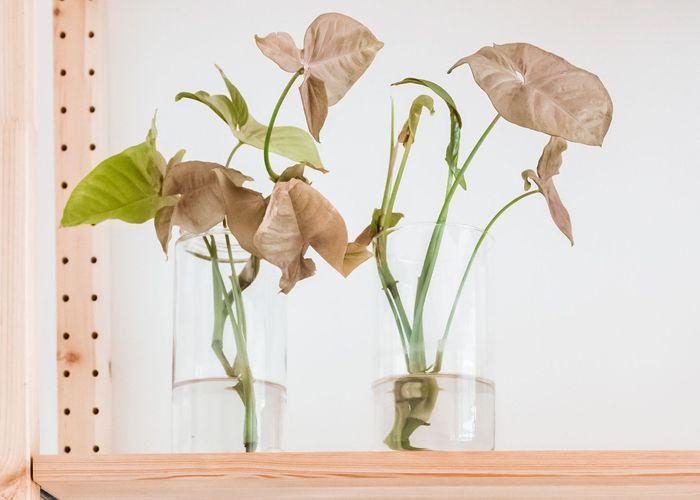
Adding Syngonium or arrowheads to your indoor plantings can make a great impression. It is also a low-maintenance plant that can be grown without soil.
Place the plant in a glass jar where it can receive bright, indirect sunlight. A window sill or tabletop is a perfect location for growing Syngonium vines in water. However, in any case, avoid direct sunlight.
In addition, this indoor plant can reduce components of indoor air pollution.
As they come in several varieties, you can choose the plant according to your choice of color and variegation. The plant will thrive in water as long as you change it every 3-5 days.
9. Coleus
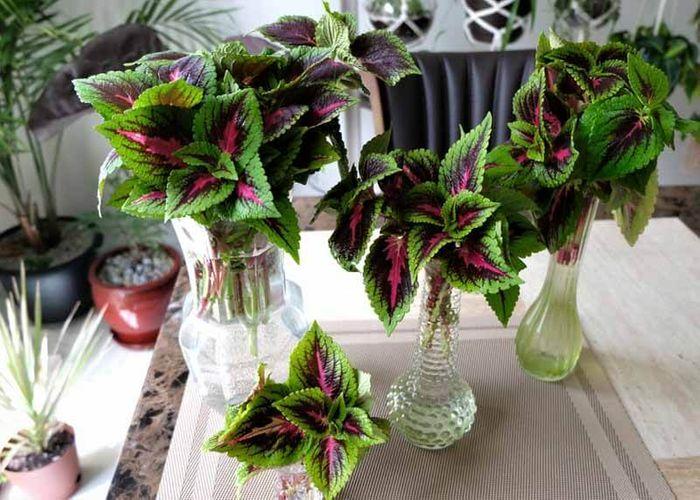
If you are looking for an easy-to-maintain and colorful plant, then the coleus plant is for you! This plant displays colorful foliage in green, yellow, pink, red, purple, and maroon with contrasting and serrated margins. Also, coleus does well in vases and jars with water.
As the coleus likes indirect light, keep them as a tabletop centerpiece in a wine glass or decorative mason jar filled with water.
10. Herbs
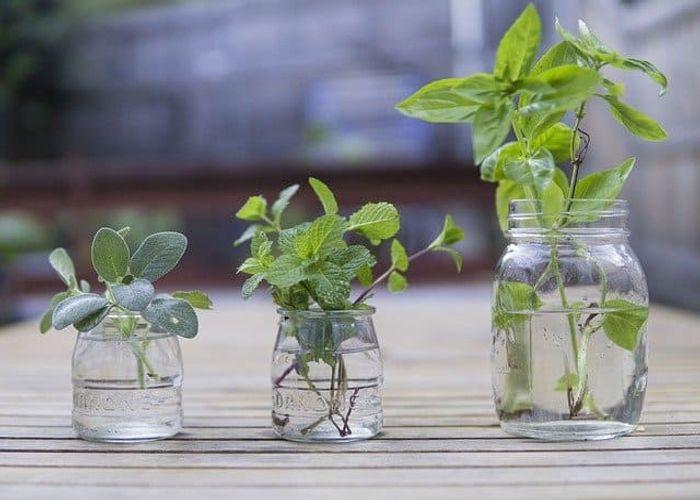
You can also grow some best herbs in water. Thyme, mint, basil, and oregano look great when kept on a well-lit kitchen windowsill.
Along with the great look, they also provide a fresh harvest. You can also use these herbs everyday to enhance your meals.
11. Dracena
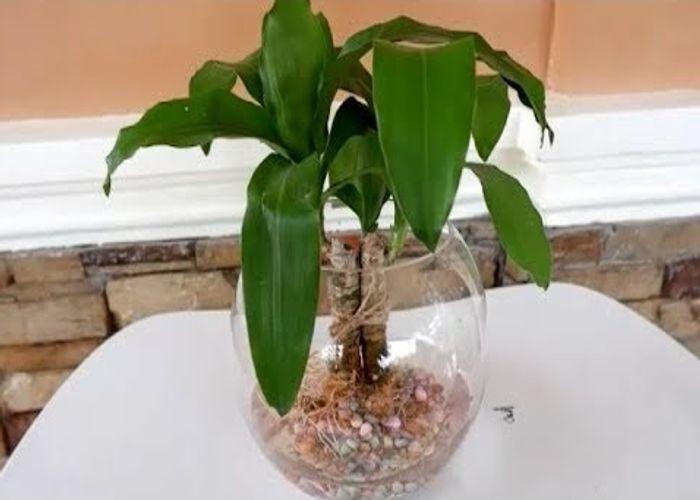
There are many Dracena varieties that you can grow in water. Glass jugs and narrow jars are perfect for them. However, use chlorine and fluoride-free water.
In addition, do not allow the water in the jar to become mushy and unclear. Keep changing the water 2-3 times a week.
12. Croton
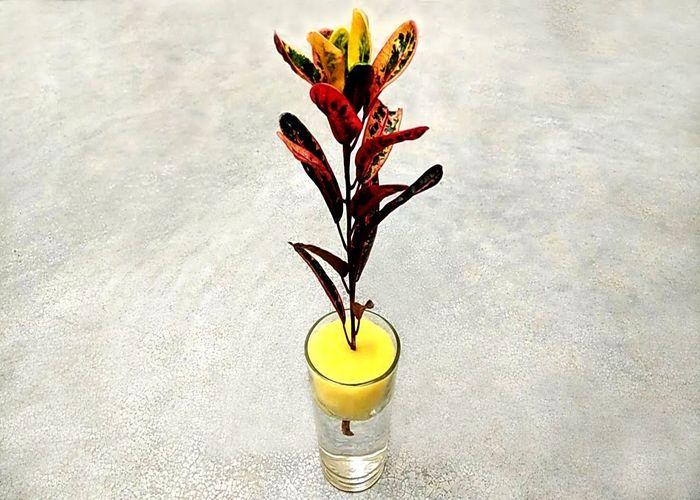
We have added Croton to the list because of its bold foliage. It may not grow permanently in water but you can use the cutting method.
Crotons are notorious for being fussy, but with proper care, they can be hardy and difficult to kill.
Place the plant in bright light, it will produce the most vibrant hues. Indoors, they can withstand medium light but they will not grow much. Also, due to insufficient light, their leaves can revert to simple green color.
13. Impatiens
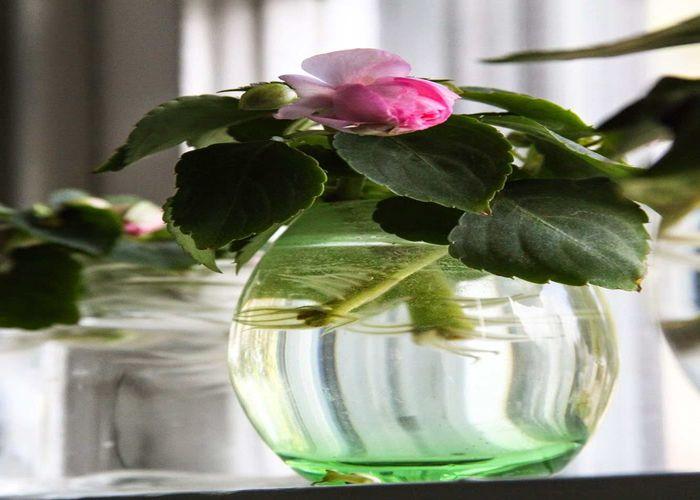
Impatiens are capable of growing in water for a long time. Just remove the lower leaves and immerse the cut ends in water. Transplant them into pots when they form long roots. By doing so, more new impatiens will be ready in time.
14. Begonia

Like impatiens, growing begonias in water is also possible. For around two months, you can keep them in a glass bowl before they start to fade. Remember to change the water every week to prevent the rotting of the begonia cuttings.
While watering begonia, avoid watering when the sun appears on the leaves. Because these will damage their leaves.
The common fungal problems can be reduced by using dripping tape, a soaker hose, or spraying water.
15. Paperwhite
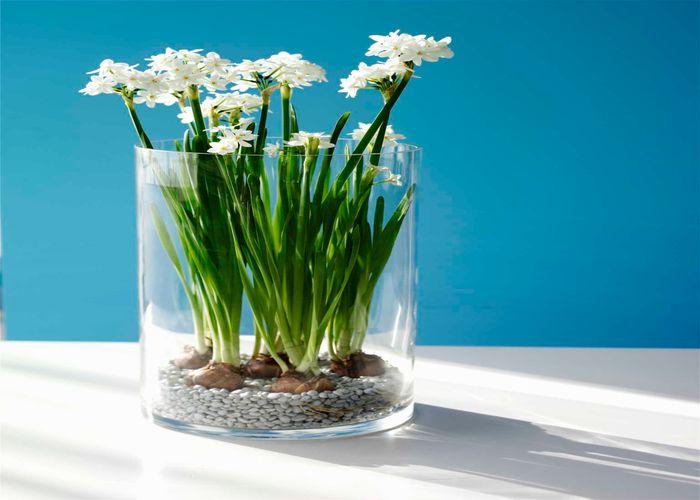
With the use of water, you can grow paperwhite narcissus bulbs and make them to flower easily. To do this, fill the bottom quarter of a glass terrarium with seashells and gravel. Now arrange the bulbs closely and cover half of them with gravel to fix them in place.
After this, fill up the terrarium with water, up to the base of the bulbs, but do not let it wet the bulbs. After 4-5 weeks, they will start blooming if you place them in a bright spot.
16. Ornamental sweet potato

Add a tropical touch to your kitchen windowsill with ornamental sweet potato vines in a glass jar. Just below the leaf node, cut a few 6 to 8-inch long stems, remove the lower leaves, and submerge them half in water. Change the water as necessary to encourage growth.
17. Caladium
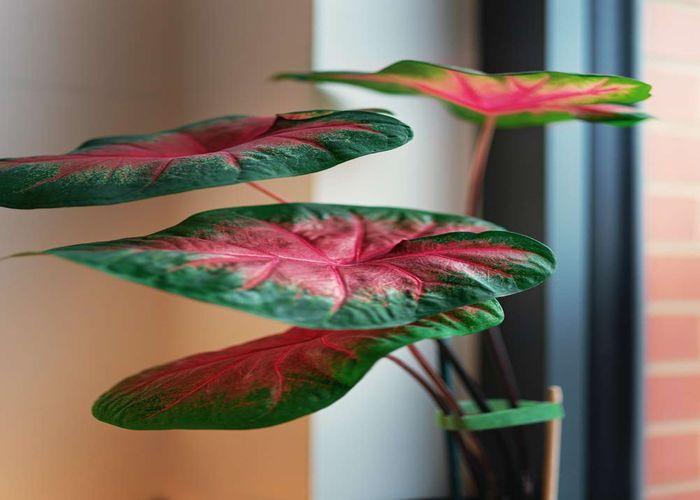
Caladium grows quite easily in water. Place the water-grown plant on your desk, dining table, or tabletop for a stylish look.
18. Alocasia
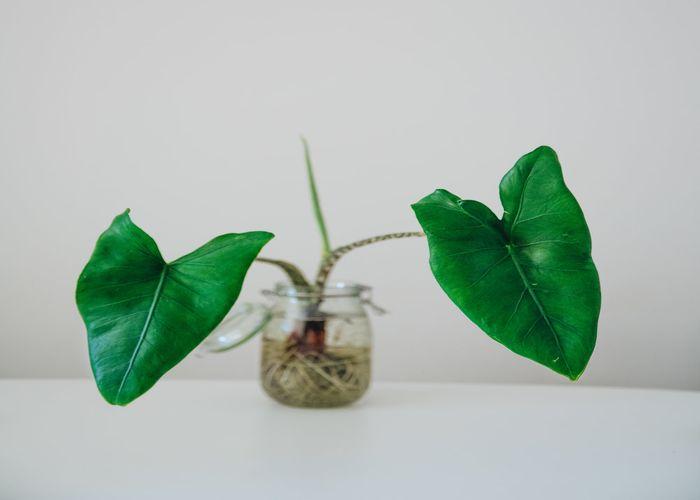
You can grow alocasia in glass jars filled with clean water by separating the offsets and clumps with a disinfected knife.
19. Ti plant
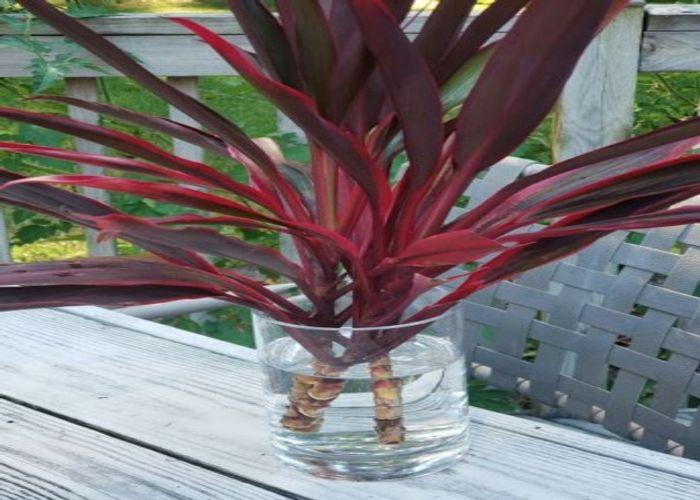
For Ti indoor water plant, you can take a cutting of 5-8 inches from a healthy plant, remove the bottom foliage, and put it in a clean vase or jar filled with water.
20. Sweetheart hoya

Hoya can be grown easily in a glass of clean water with cutting in an area that receives bright indirect light.
21. Moth orchid
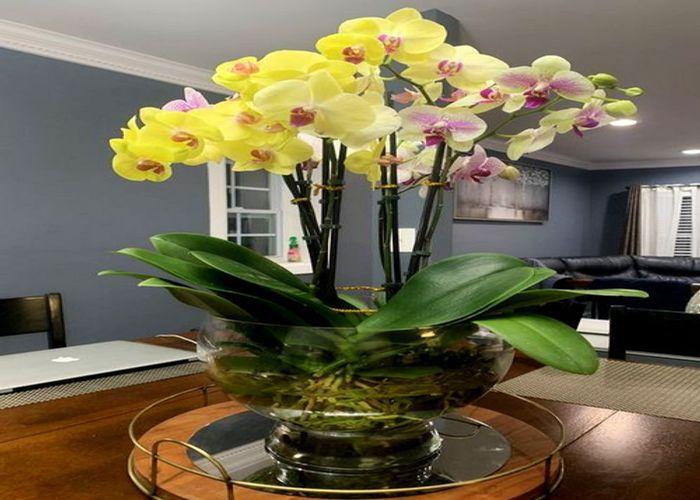
As an indoor water plant, this beautiful houseplant thrives. You can also add colorful pebbles to support its roots.
22. Prayer plant
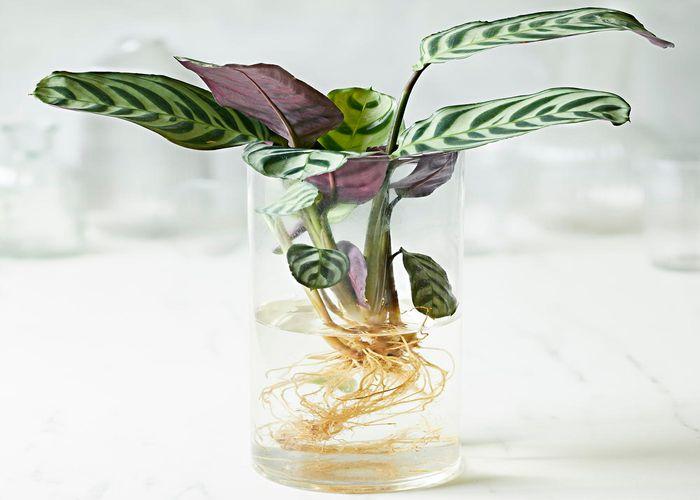
You can grow prayer-plants in water from cuttings, and they look adorable in jars with their deep green leaves and red veins.
23. Aluminum plant

A glass jar filled with clean water enhances the beauty of Pilea cadierei’s (Aluminum plant) variegated gray-green foliage. Provide medium to low lighting to your water-grown plants.
24. Chinese money plant

In small vases, Chinese Money Plant leaves look enchanting because of their round shape. Place them in bright, indirect light for optimal growth.
25. Monstera
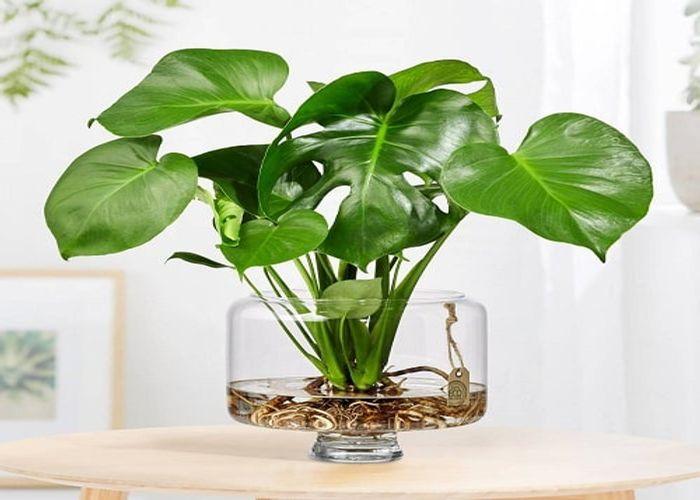
In water, Monstera can flourish and grow if you take good care of it. With its large, slender leaves, it looks quite stunning.
26. Mint
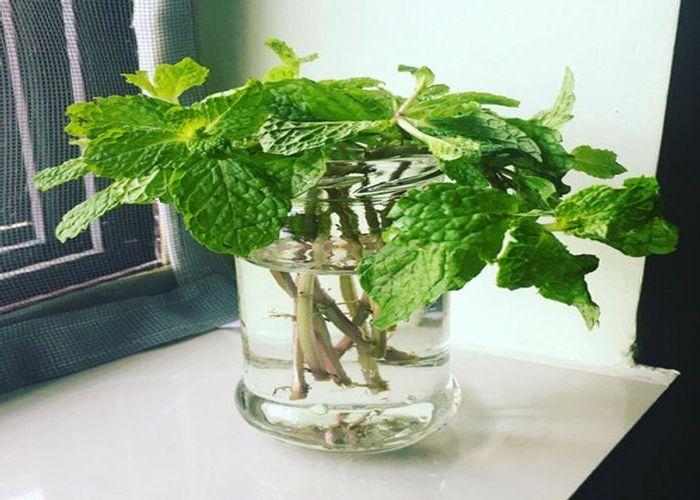
Keeping mint in a container of water will ensure that you always have mint in your kitchen. Moreover, crushing a few leaves will provide an instant freshener for your room.
27. Geranium (Pelargonium species)
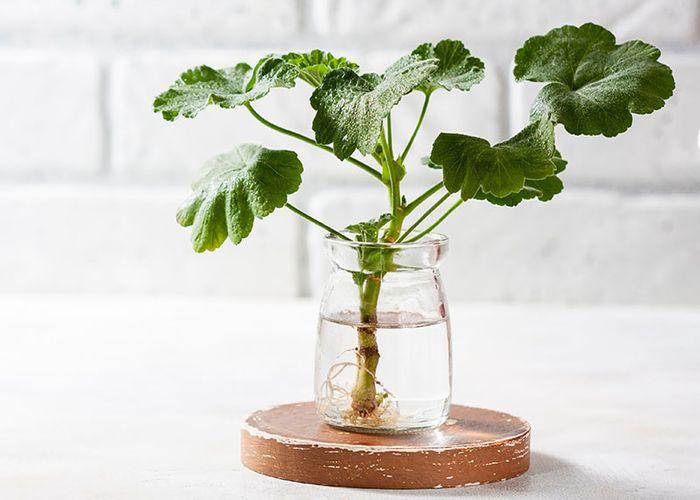
During summer, container gardens are popular with geraniums. In addition to long-lived houseplants, these can be brought inside before the first fall frost.
Instead of bringing home a large potted geranium at the end of the season, you can clip stems from your favorite varieties and grow them inside.
Cut the stem that is 5-7 inches long, below the leaf node where the roots will emerge. Keep them in a clean vase or jar of water, changing them every few weeks.
28. African violet
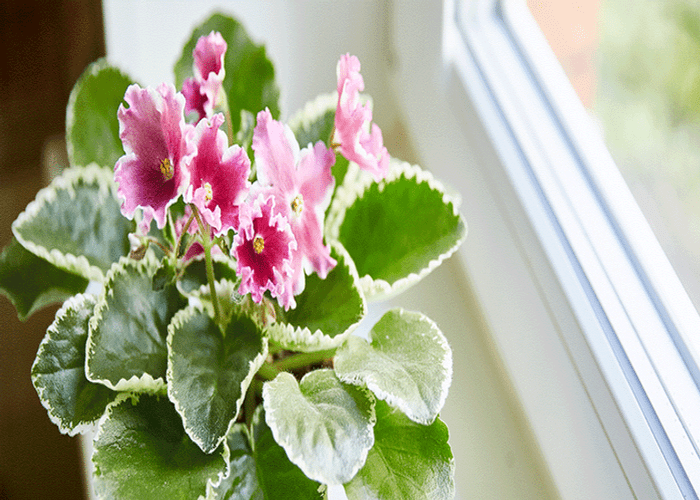
If you grow an African violet in water from its leaves, you will usually get a clone of the parent plant, although some multi-colored violets will give you a plant with solid colors.
To start new African violet plants, select young, healthy leaves. Put the leaf in a narrow-necked bottle that will keep it suspended and dry, and cut off about 2 inches of stem. You will see roots growing about a month after placing the leaf in the bottle. As time progresses, a tiny plantlet, complete with its crown, will develop.
29. Baby tears

The Baby’s Tears plant produces numerous tiny leaves on creeping plants that form a dense yet delicate mat.
Pinch a few stems off, roots or no roots, and observe how quickly this plant adjusts to growing in water.
Baby’s tears plants are known for growing so many leaves along their stems that they rot when they are constantly submerged. Hence, the water should be changed weekly so the leaves aren’t floating. The water can be lowered once the roots have established themselves and are delivering moisture to the plant.
30. Spiderwort
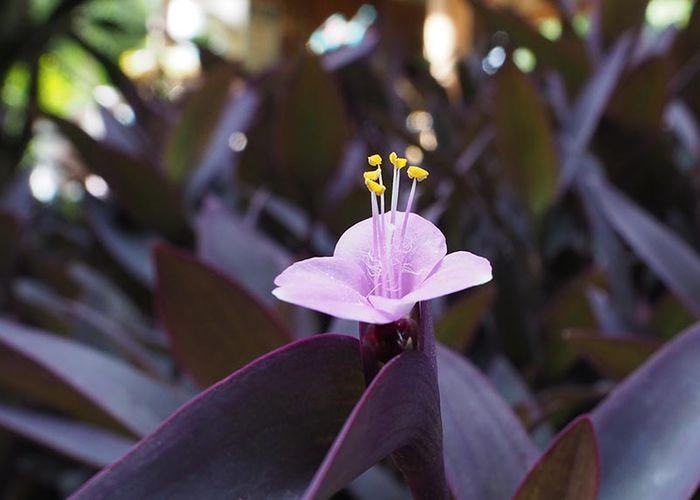
As a low-care plant, spiderworts can fill a void in your houseplant collection that no other plant can. Both the zebra-striped and purple-leafed varieties thrive in moderate light and make an impressive focal point in rooms.
If you look closely at the leaf nodes in a spiderwort stem, you will see root nubs waiting to grow. By putting some stems into a mason jar or vase of water, you will soon have your spiderwort babies.
31. Peace lily

It is amazing how many roots a peace lily has. Therefore, growing it in a glass jar is definitely a good idea.
You will need to remove a mature Peace Lily from its pot. Wash it until you can clearly see the roots. Take a knife, and remove all the offshoots from the roots and the crown. keeping up to four leaves intact.
Then you may add it to the glass bowl (well, any vase would do, but glass will allow you to see the exposed roots – gorgeous!).
With these, one thing to remember is to use fresh water. You can water them weekly. This will allow the roots to absorb the nutrients. The fresher the water you provide, the more nutrients the plant will receive.
32. Carrot top
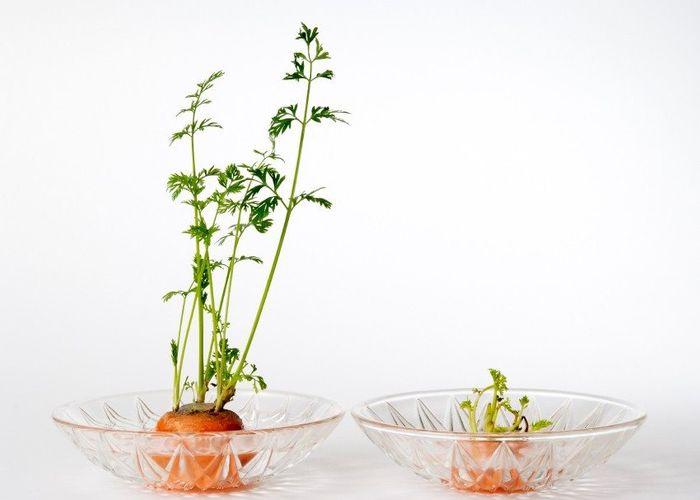
To be clear, you won’t sprout the vegetable from water and a few shreds of carrots. The greenery from the carrot tops, the part of the carrot that is used for salad, is what will help the plant grow.
The majority of people skip this step when they are prepping vegetables. They cut off the head of the carrot and toss it. Such a waste! Instead, you can make pesto with the carrot tops. This is also a fun project you can do with your kids. Let them grow their own dinner.
Get a dish that is shallow with enough cotton balls to line its base. And an approximately 3 cm section of a carrot top with some root visible at the top.
Put cotton balls in the dish to line it, stick the carrot into the center, and keep the cotton balls moist. Do not let the cotton balls dry out completely. As long as it receives a lot of natural sunlight, this method gives the fastest growth.
The window in the bedroom or kitchen is perfect for this indoor water plant. If not, simply move around the house and put it on the windowsill of the sunniest room. In just a few days, the greenery will sprout carrot tops.
33. Lettuce

The stems of any lettuce can be regrown other than homegrown lettuce, Romaine lettuce seems to work best. You should not expect to get a full head of lettuce, similar to the size you started with. That will not happen. There will be enough lettuce to add to a sandwich. Each stem yields one serving.
Start by cutting the leaves of a Romaine lettuce about an inch away from the stem. Make sure to use all the leaves. Leave only the stem.
Put the stem into a dish of water with a depth that will give it about a half-inch of water. Replace the water in the dish every day or every other day for up to 12 days while it is on the windowsill to get direct sunlight.
34. Cabbage

Growing indoor water cabbage leaves is the same process as regrowing lettuce leaves. It only needs one cabbage leaf left over, a shallow dish, and a little bit of water to start reproducing.
It is advisable to change the water regularly, and you can even use recycled water.
Grab some of the water from your pot of pasta or the water you’re draining from that pot. Pour it into your dish. Within a few days, you’ll notice new leaves forming.
You can do this one for the whole summer.
35. Garlic leaves

They don’t taste exactly like garlic. The taste is milder, a bit like a green onion with a hint of garlic.
You will need a fresh garlic clove and a tiny glass (like a shot glass). Pour just enough water into the glass to cover the bottom of the garlic clove. Do not fill it to the brim. Place this on your windowsill, then allow it to grow until you have inches of green garlic-flavored leaves growing from the clove.
Just trim the leaves off the top when ready to use. You can always re-grow some garlic if you don’t like the taste.
36. Green onions
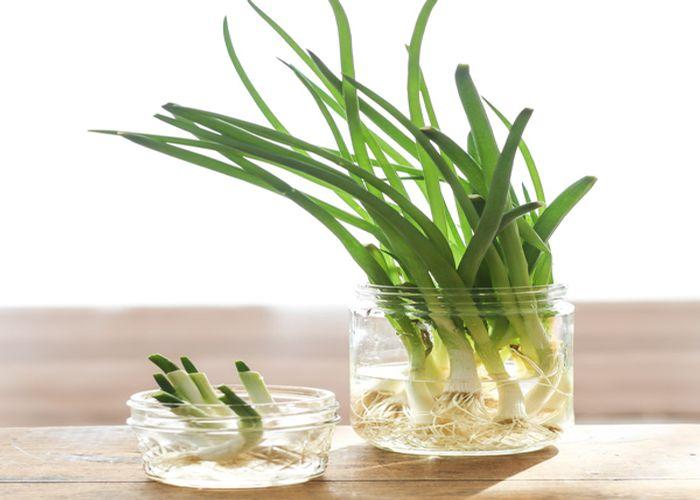
When you see how easy these are to grow in water, you will never buy a bunch of green onions again. Whenever you buy green onions for your groceries, just use them as you normally would, but don’t toss out the inch or two of root end you cut off.
Make a glass jar and put the root end down in a 3-4 inch of tap water and place it on your windowsill.
Replace the water every 2-4 days and you won’t need to buy green onions ever again. Within one week, they will grow inches tall. Slice the tops off, and use as needed.
37. Leeks

Like green onions, you can use these too. The root end of the plant should be cut off and placed in a glass jar, but instead of 3/4 inches of water, fill the jar with water to cover the roots.
Despite its mild flavor, it is perfect for sprinkling over scrambled eggs, topping salads, or garnishing soups.
38. Lemon grass
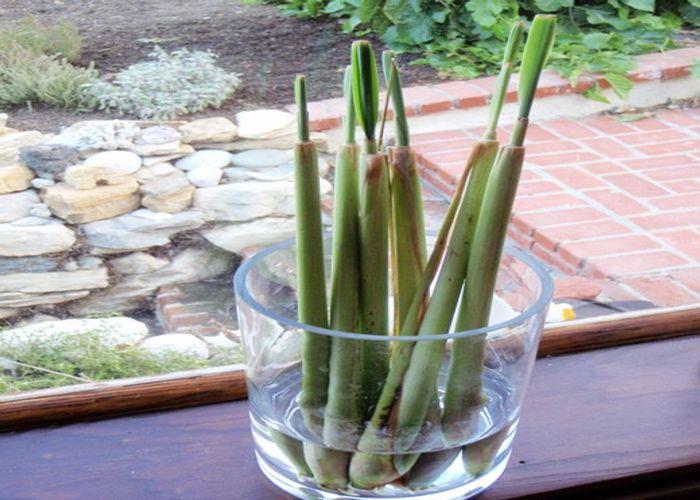
Here, you just need an intact bulb on a hearty stalk. It would be even better if it had roots.
Make sure the stalk is root-end down (just like the garlic bulb and the green onion root), and cover it with one inch of water. Keep the pot in a sunny spot and it should be fine.
Change the water daily, and over time you will likely have more lemongrass than you can consume.
39. Fiddle leaf fig
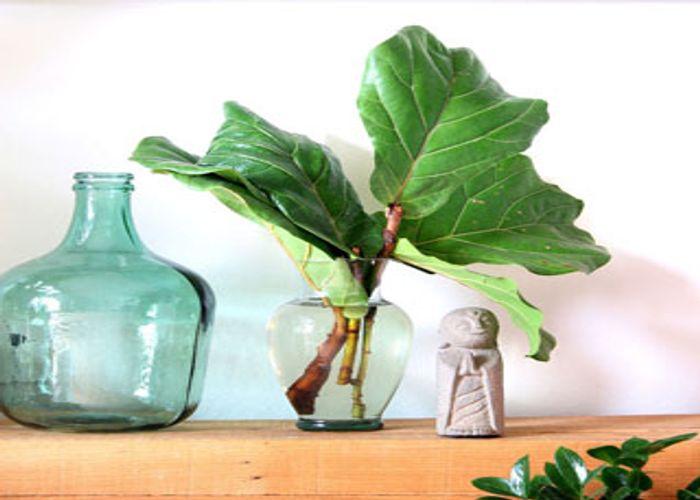
The fiddle leaf fig is another great indoor water plant with large, violin-shaped leaves. The plant thrives in warm and wet conditions, which makes it super easy to grow in water. After four weeks, you will begin to see roots developing on the cutting’s stem base.
Eventually, you will see roots growing in the water after a few more weeks. Within a short period of time, you will have tons of fiddle leaf figs to share with your friends or to sell for a decent price.
Is it possible to grow plants in just water?
It is possible to propagate many plants by taking stem cuttings and soaking them in water. Most of them will grow and flourish in vases and bottles filled with water.
What are the requirements for growing indoor water plants?
The glass bottles make it easy for you to see when your plants need more water. Occasionally, add some All-Purpose Organic Plant Fertilizer to the water to feed the plants.
How to take care of indoor water plants?
- Cut off 2-3 inches of a healthy stem just before a node, and include at least two nodes with the stem. Take a clean, sharp knife or scissors and cut around 1/4 inch below the node.
- Cut a few leaves off the bottom of the water plants. Put the cut stem in a clean glass. Pour just enough room temperature water so that the nodes are submerged.
- The best place for houseplants that grow in water is in a spot that receives bright indirect sunlight.
- Keeping your indoor water plants healthy is important. Keep the water changed every 4-5 days to prevent the growth of mosquito larvae or algae.
- Avoid submerging the leaves under the water.
- Make sure the water is changed regularly.
What is the best place to place indoor water plants?
In many cases, indoor plants are grown in water rather than soil. If you add water plants to your shelves, tables, and mantles, you can bring positive energy into your home.
It is possible to use water plants creatively, depending on the size of the container and the space available in the home.
With a few plants grouped together, you can create a stunning centerpiece, or you can make a vertical garden on the wall, by placing plants on a shelf.
It is important to place water plants correctly. Make sure the plants are placed in a bright and indirect area to get the best results. In general, these plants grow well in places where the temperature remains relatively stable. For most plants, a humid climate is best.
Containers for water plants indoors
Water plants can be grown in almost any container that is able to hold water. For holding and supporting the plant, you should use glass containers with a thin neck.
you can keep an eye on the water level and see where the roots grow with glass containers. For this purpose, you can also use fish bowls, old bottles, glasses, jars, and slim test tubes.
A variety of vases come in different sizes, materials, designs, and colors, so you can display indoor water plants at home. Water plants do not need direct sunlight, so you may be able to place them in a corner of your living room and use wall-mounted containers.
How To Transfer Plant Cuttings from Water to Soil
Once your plant is already growing roots in water, then you might be wondering what comes next!
To transfer your cuttings, you need to consider how long the roots are. The roots should be at least two inches long before transplanting.
Follow these steps to transfer your plant cuttings from water to soil,
- Prepare the new pot by adding some fresh soil to the bottom.
- Take your rooted cutting out of the water, give it a quick rinse with fresh water, and plant it in its new home.
- Then cover it with soil and water it thoroughly until water begins to drain from the drainage hole.
Conclusion
The lack of a garden, the lack of space in the backyard, or the messy soil of houseplants should no longer keep you from having any greenery. Also, you don’t have to worry about drowning them since all they need is water and sunlight to survive.
In addition to being easy and convenient, growing plants in the water will also provide you with some additional benefits. There are some to decorate, some to eat, and a few just for fun, and for some luck, plant some lucky bamboo. By placing this in your hallway, you will give your family and guests a good fortune.
Additionally, you can grow vegetables, particularly those organic ones. Also, your family will enjoy these fun projects and you will save a lot of money.
So go ahead, fill your water jars, mason jars, or any other vases you would like to use for indoor water plants, and start growing them.
Related Articles
- 15 Best Plants for Front Door Entrance India | Auspicious plants for front door
- 10+ Money plant Benefits That Will Make you Keep It In Your House
- Are Spider Plants Toxic to Cats?- 4 Ways To Prevent Your Cats From Eating Spider Plants.
- Best Plants for the House – 8 Top Apartment Plants That You Can’t Miss
- How to Braid Your Snake Plant: Tips and Care Guide
- 20+ Rare and Unusual Peace Lily Varieties You’ll Love

